Reclaiming Native Truth: A Data Storytelling Project in Collaboration with IllumiNative


Nationwide
About IllumiNative and the Data Project
IllumiNative was founded in 2018 to activate the findings of the Reclaiming Native Truth project, the largest public opinion research and strategy-setting project ever conducted by, for, and about Native peoples.
Reclaiming Native Truth shows that we must disrupt and interrupt the erasure of Native peoples that drives systemic racism. Dismantling erasure and harmful stereotypes begins to clear a path so that we can re-educate and engage Americans and key institutions by activating contemporary and authentic narratives about Native peoples.
Invisibility of Native Peoples
The invisibility of contemporary Native peoples, voices, contributions, and issues creates a void that is filled with toxic stereotypes and misperceptions.
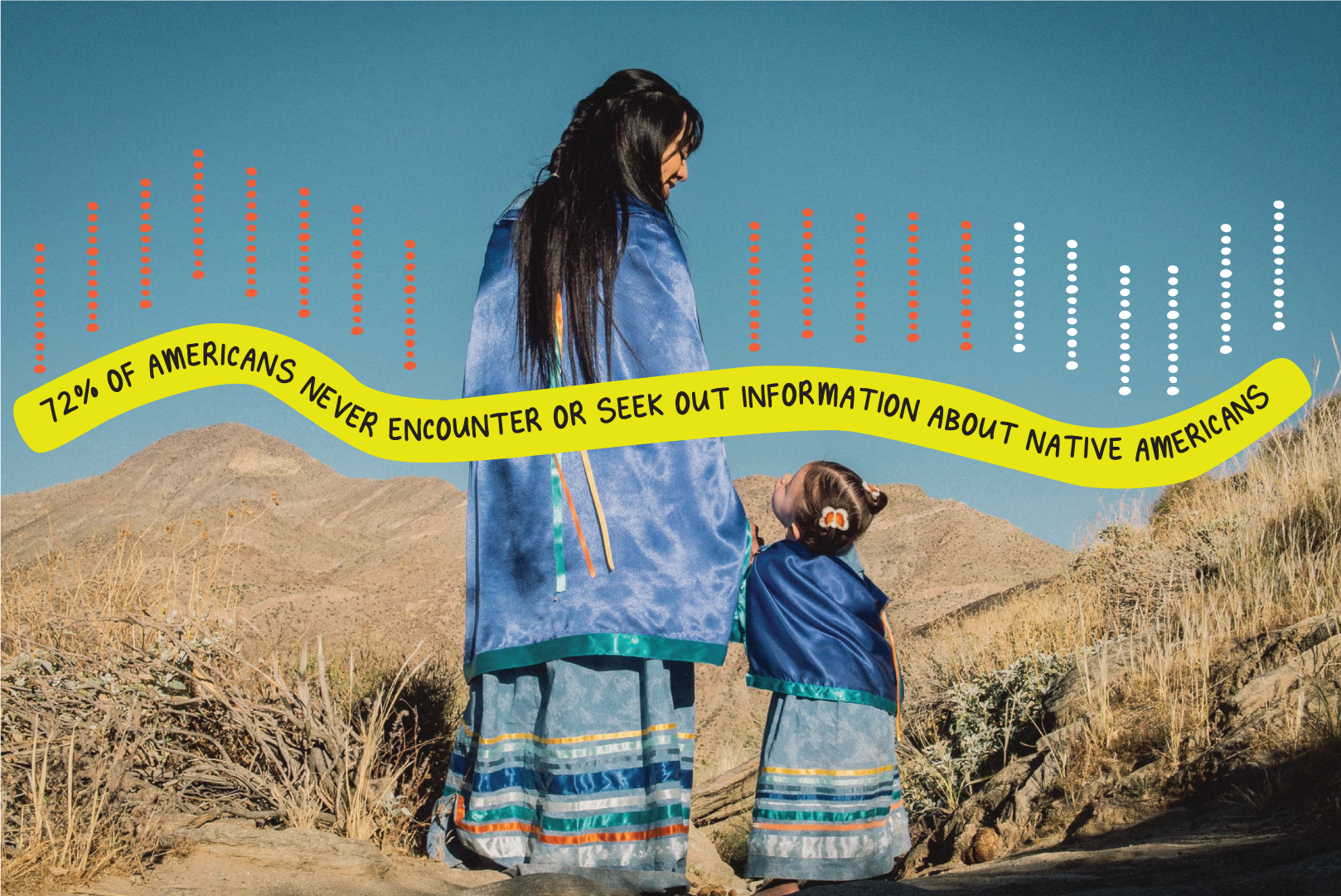
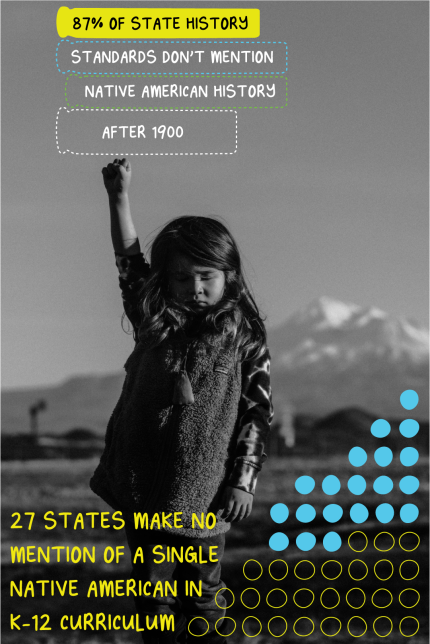
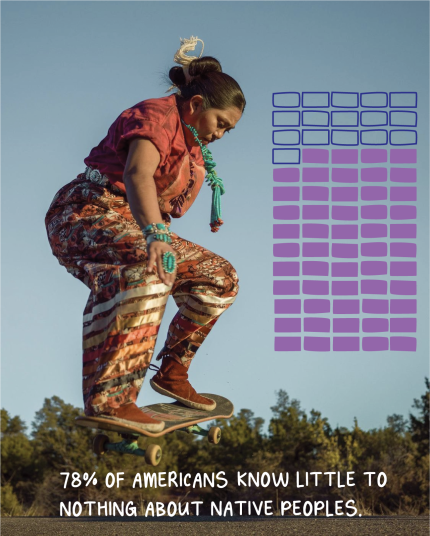
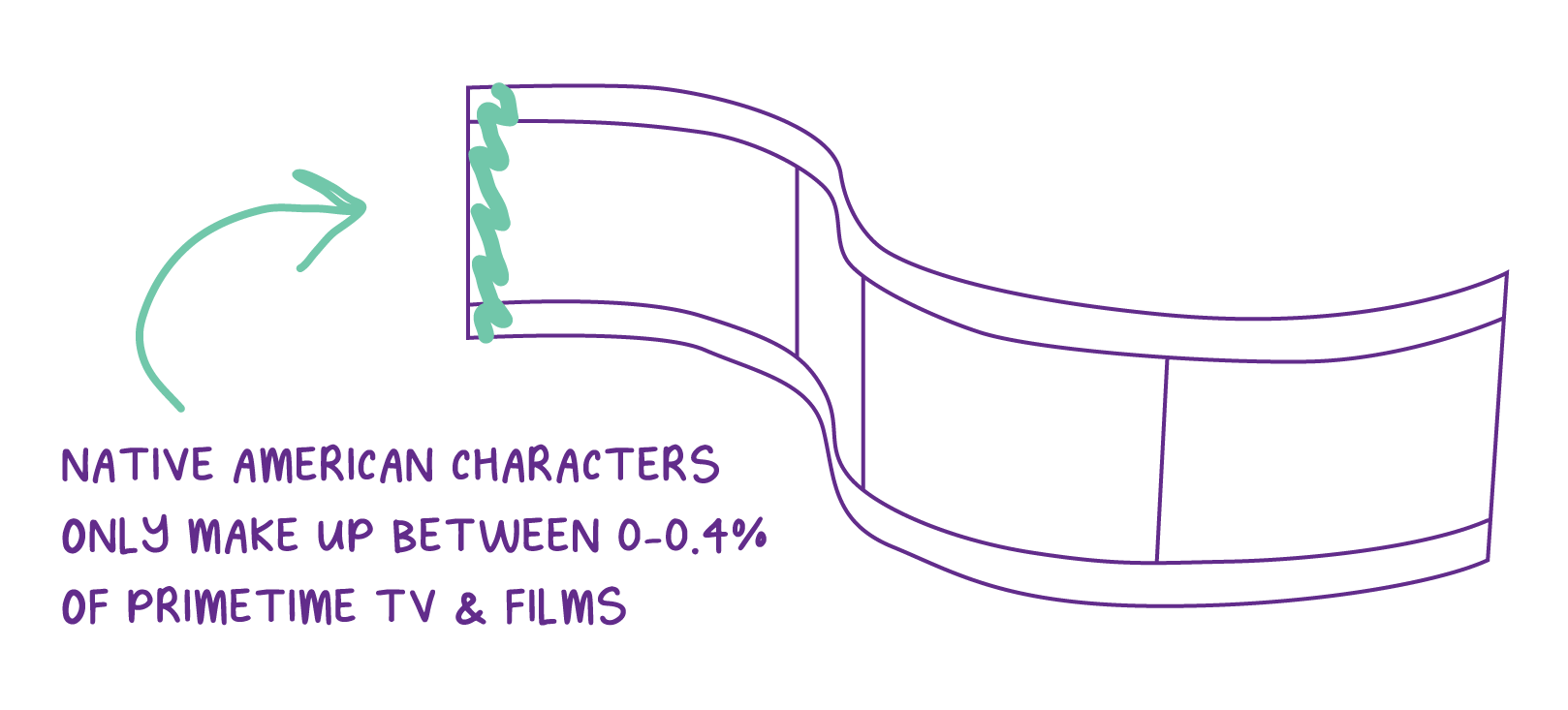
Invisibility is the modern manifestation of systemic racism and one of the greatest threats to Native lands and livelihoods.
- Crystal Echo Hawk
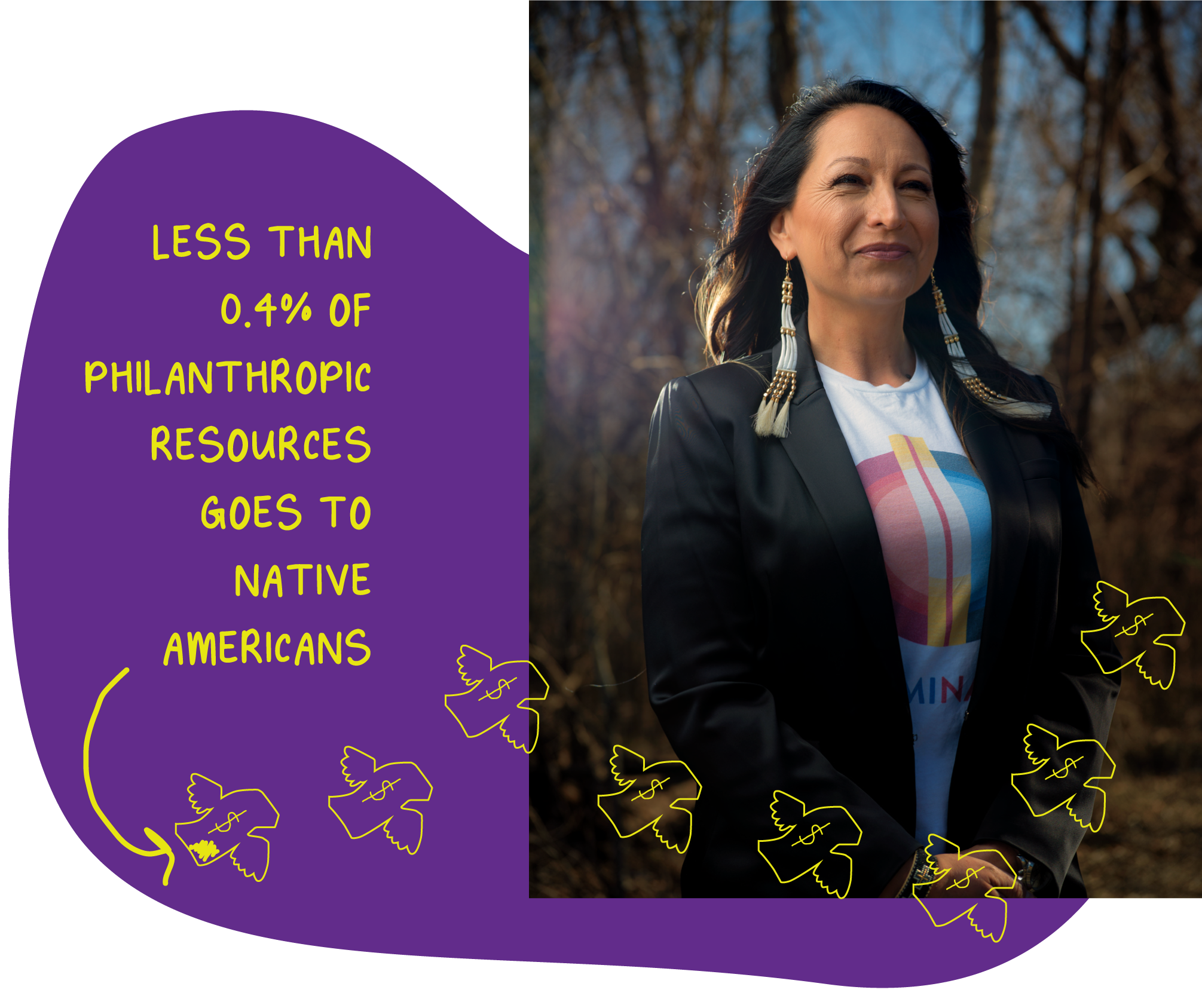
Americans Hold Negative and Romanticized Stereotypes Simultaneously
-
Separate and part of U.S. culture
-
Caring for the land and living in trash-filled or polluted reservations
-
Spiritually focused and struggling with alcohol and drugs
-
Savage warriors and noble savages
-
Resilient and dependent on government benefits
-
Poor and flush with casino money
To be seen as diverse nations not a monolithic whole
- Quote from Indigenous Futures Survey
Pathways Toward New Narratives
Diversity of Native Communities
Showing diversity including mixed Native identities.
Depicting specific tribes and cultures rather than "Pan-Indianism".
Sovereignty
Educating state and federal policymakers on the sovereignty of Native American tribes and treaty rights.
Today, There are 574 federally recognized tribes, many state-recognized tribes, as well as several other sovereign Native nations.
Native Art, Culture, Voice and Influence
Lifting up Native peoples and their history, culture, and stories. Showing indigenous joy, humor, and humanity.
K-12 Education
Recognizing the historic mistreatment of Native peoples by the U.S. government and how it still affects Native Americans today.
Entertainment
Investing in new Native stories in film and TV and replace false depictions with Native peoples' stories.
Hiring more Native artists in the full storytelling process as writers, producers, directors, actors, designers, etc.
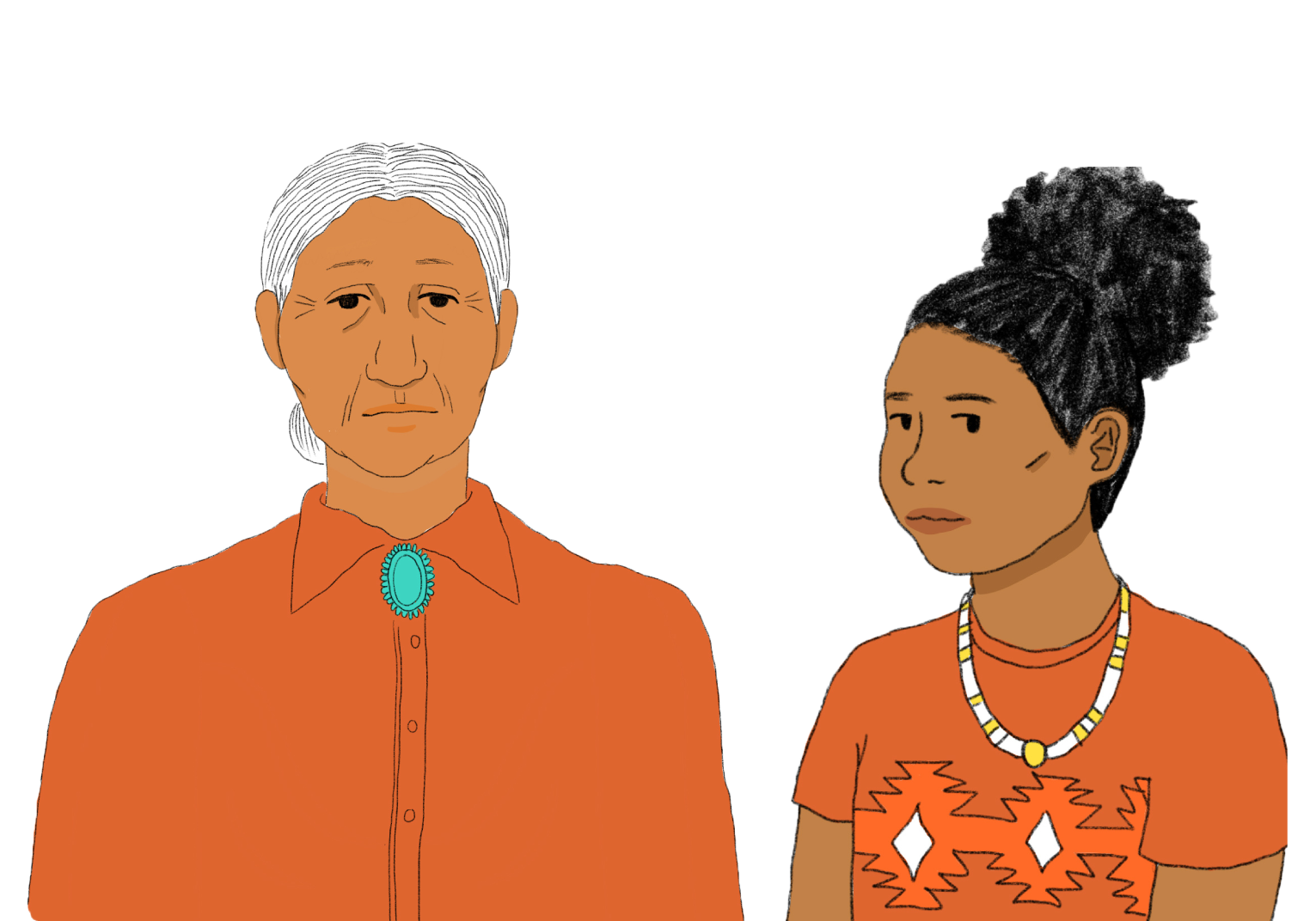
Indigenous Futures Survey 2020
Representing 6,400 Native Peoples and 401 Tribes
The Indigenous Futures Survey is the largest research conducted in Indian country representing a diverse sample across age, gender, and geography.
This data captures insight on Native American voting and political engagement. Democracy is the cornerstone of the U.S. government; however, voter suppression, campaign finance fraud, and the ongoing systemic disenfranchisement of Indigenous, Black, and other communities of color have inhibited the creation of a truly representative democracy.
Many conversations on voting norms and behaviors neglect Native peoples and dismiss the Native vote as inconsistent, Native people as unengaged, or the Native population as too small to make a difference in elections.
This survey is the first step in a yearslong process to understand the motivations, priorities, and the changing demographics and beliefs of the Indigenous community.
A 2.0 version of the Indigenous Futures Survey was conducted in 2021-2022 and a new report will be published by Illuminative at the end of 2022.
Identity
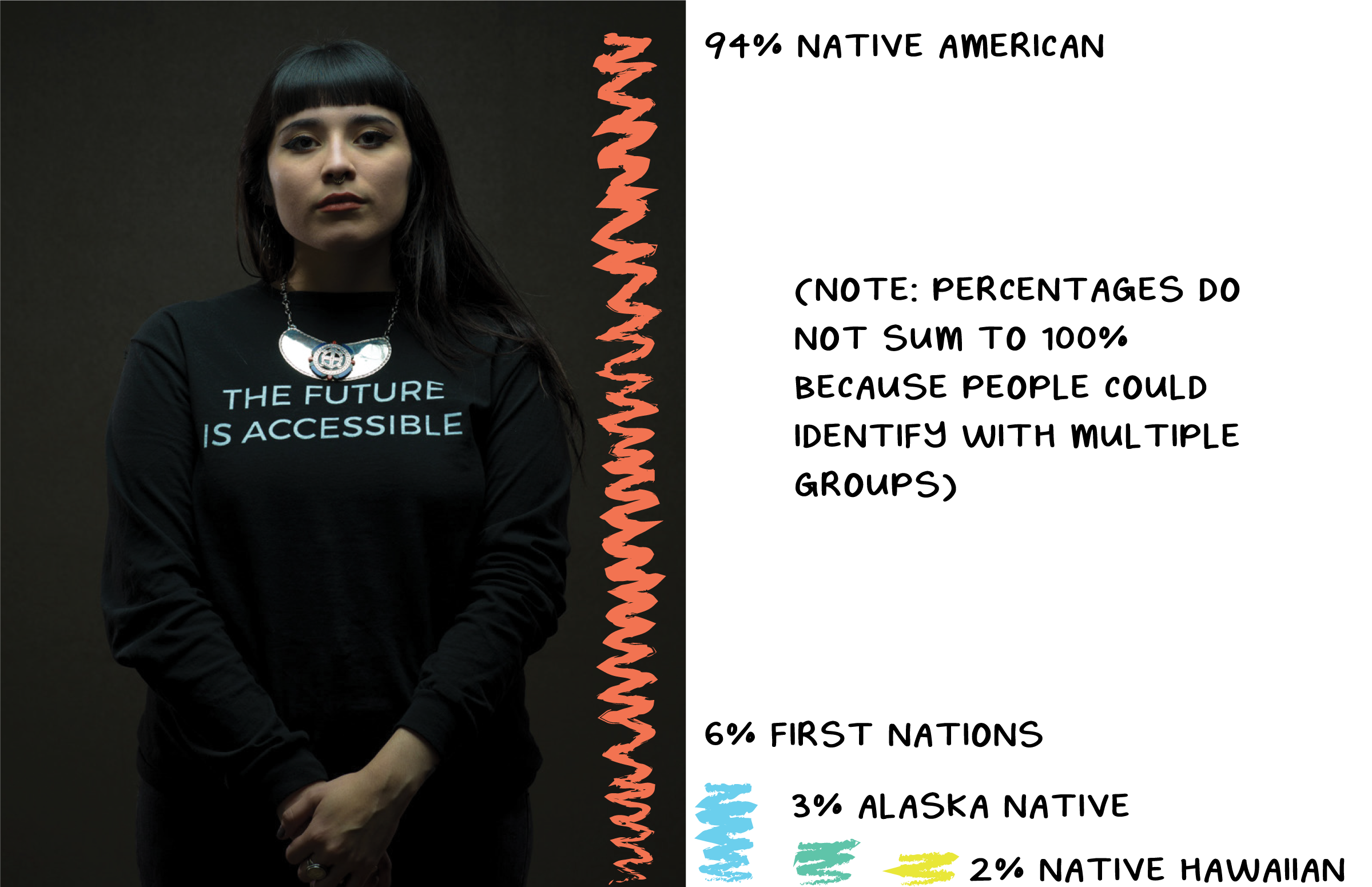
Residence
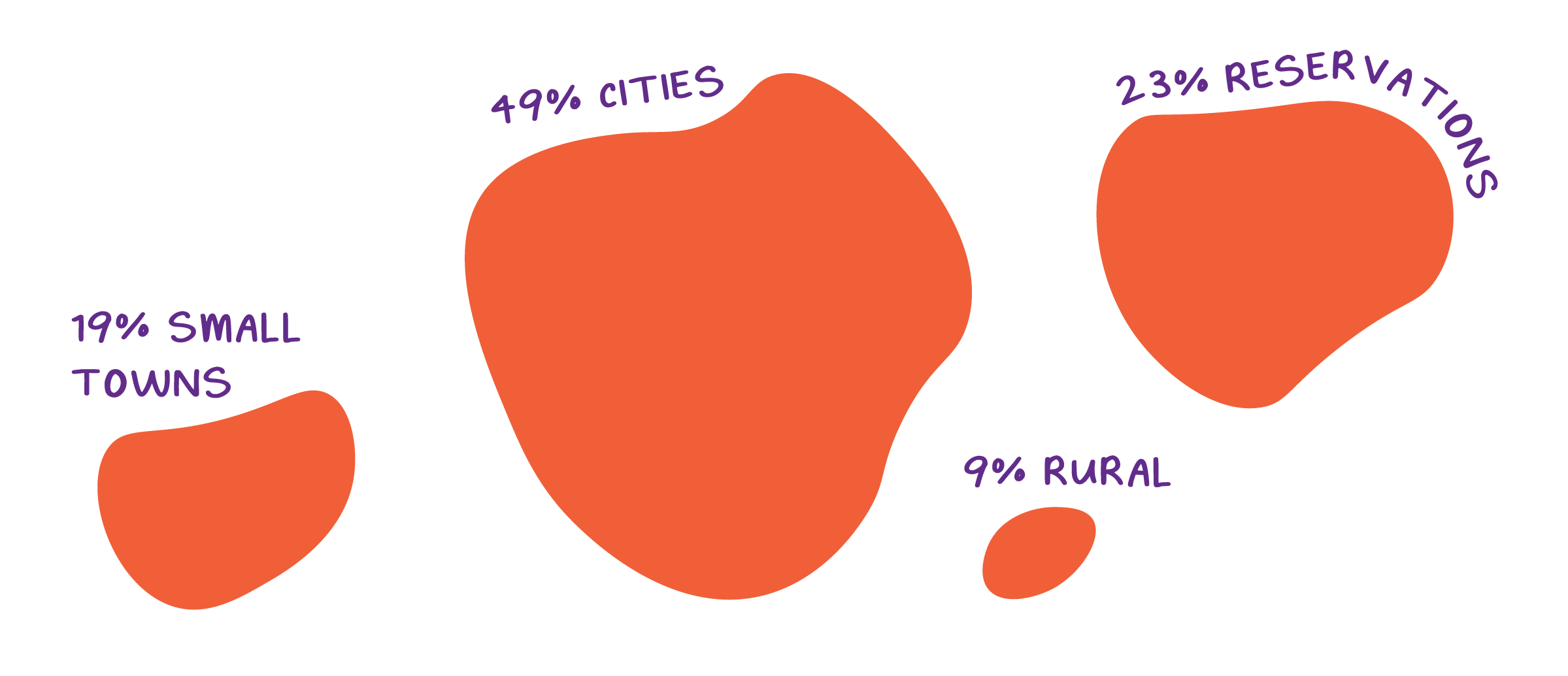
Enculturation
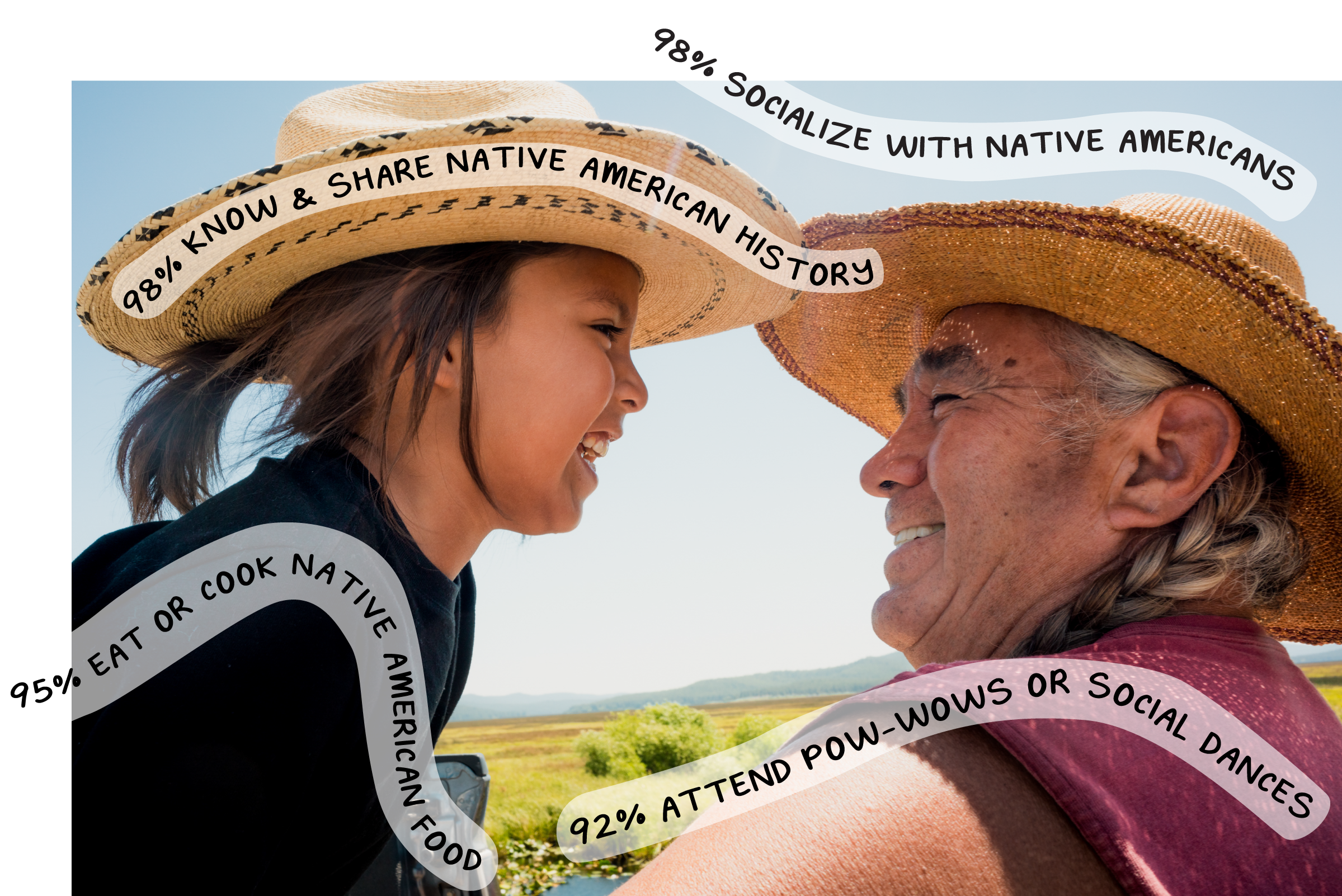
Indigenous Peoples are Civically Engaged
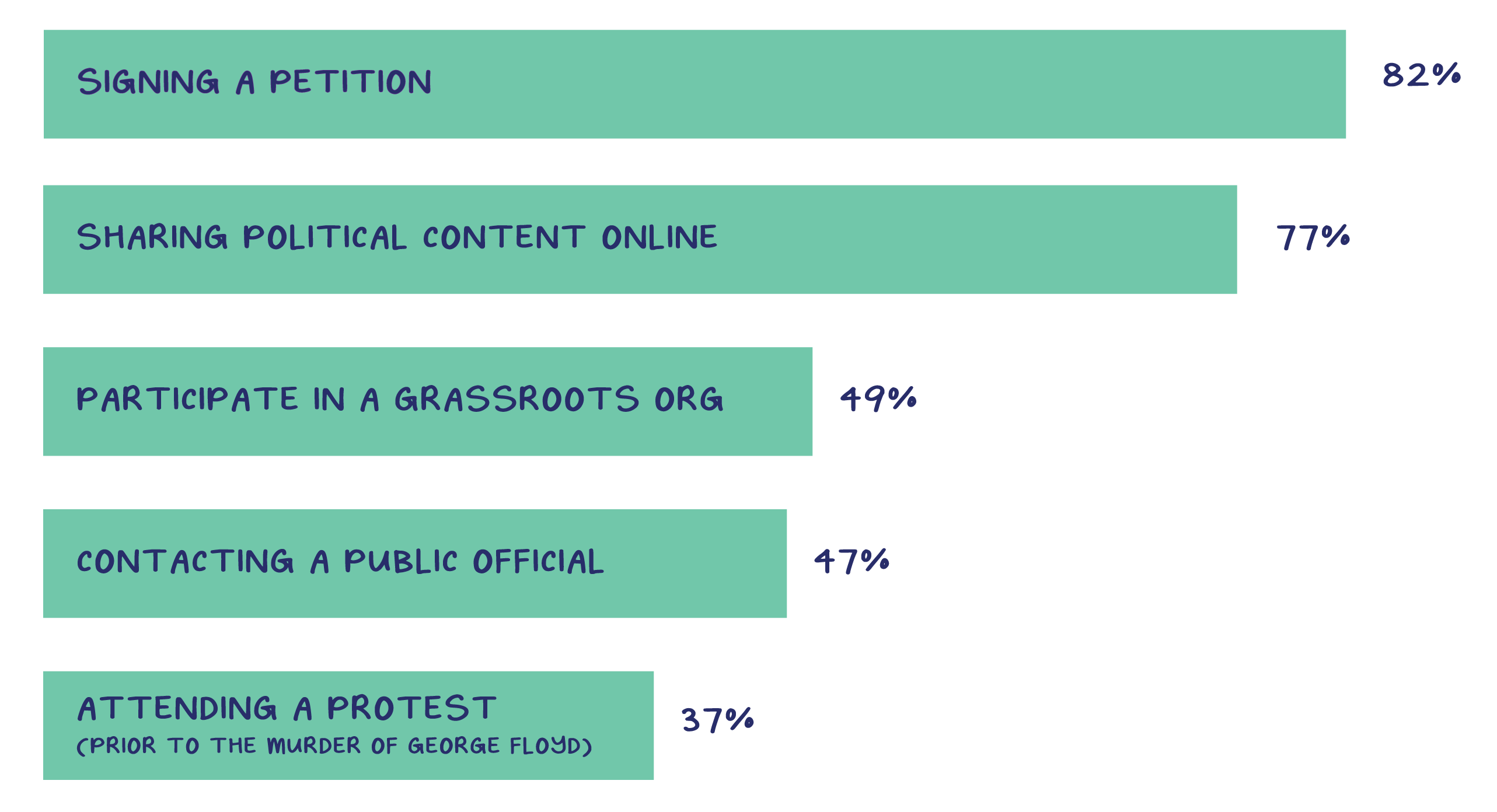
More Trends in Civic Engagement
-
Indigenous Trans, Non-binary, Genderqueer, and Two-spirit peoples engage in more civic activities.
-
Indigenous people who participate in more cultural activities engage in more civic activities.
-
Indigenous peoples are motivated most by candidates platform and track record on Native and tribal issues.
Priorities of Indigenous Communities
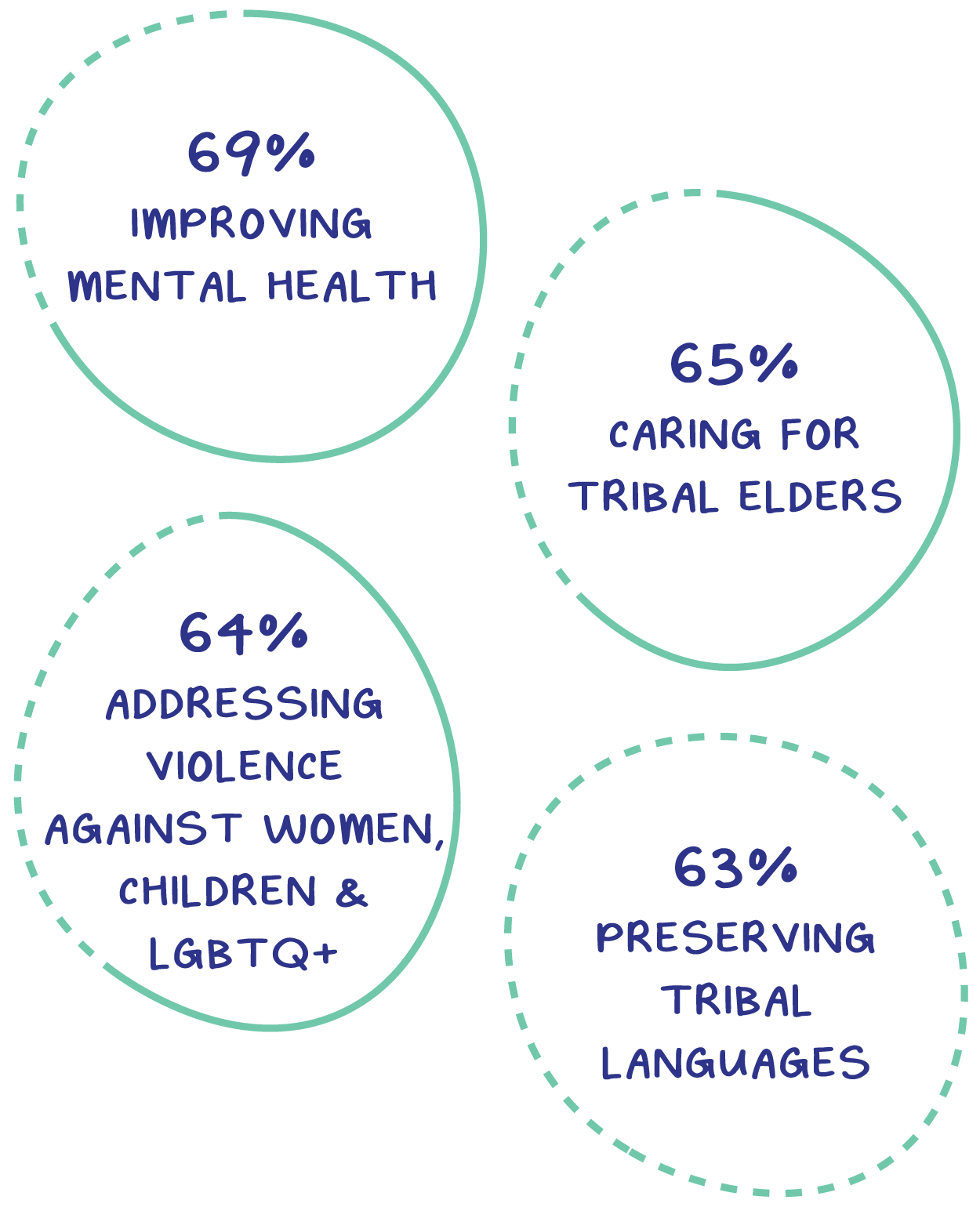
Barriers to Voting
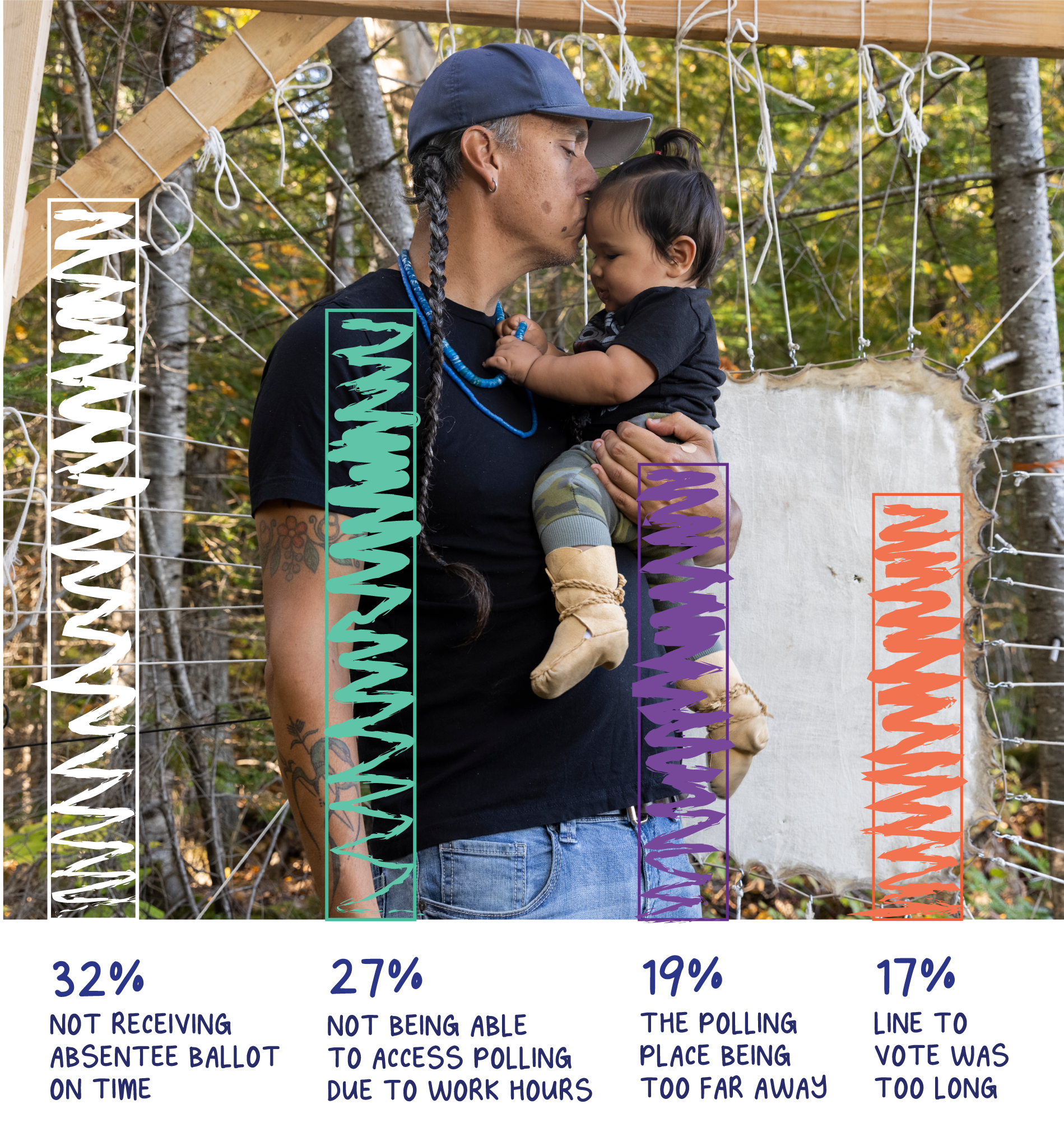
Other Trends in Barriers to Voting
- 48% of Indigenous Trans, Non-binary, Genderqueer and Two-spirit peoples experience more barriers to voting.
- 39% of Indigenous young people (20-29 years) experience more barriers due to lack of transportation to the polls.
Data from this Project are Drawn From:
Illuminative Insights and Action Guide
From Protests, to the Ballot Box, and Beyond: Building Indigenous Power